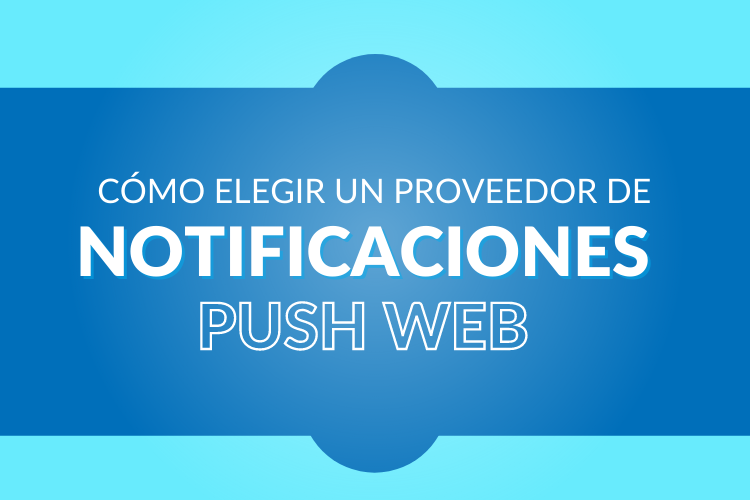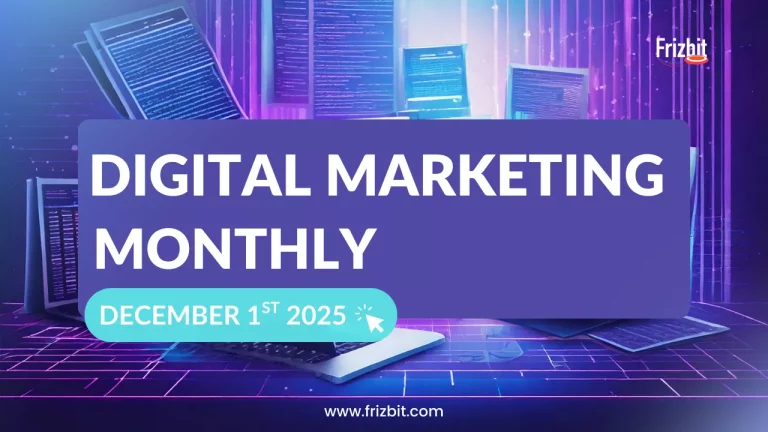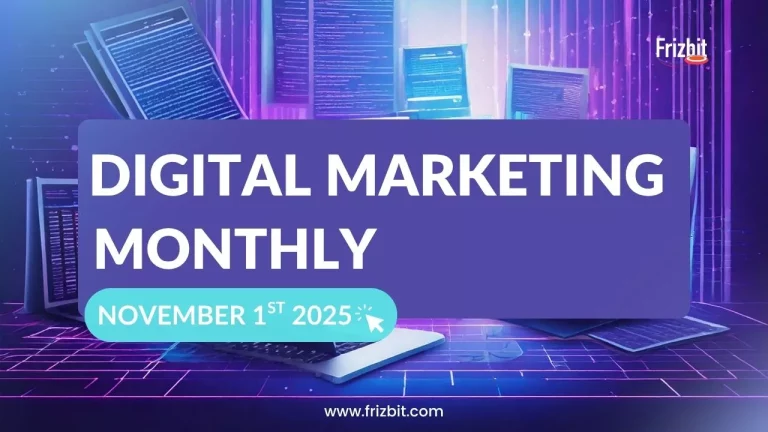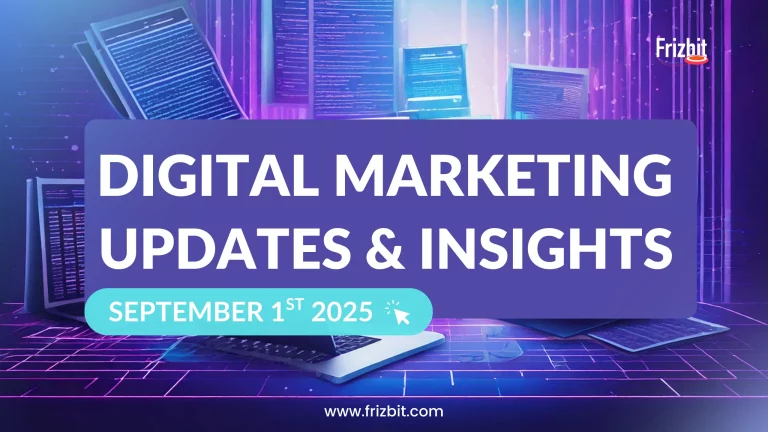Web push notifications are quickly changing the way online businesses approach retargeting strategies. This channel allows sites to reach anonymous users in real time encouraging them to visit once more and complete a conversion while engaging with highly relevant content.
The value they present is undeniable, especially when looking forward to a digital marketing landscape without third-party cookies. Even though web push notifications are a fairly new channel still unknown for many marketers, the ones that have tried them are seeing an exponential increase on their revenue and amazing ROAS results.
With the rise of web push notifications as an essential part of digital marketing strategies, hundreds of companies have emerged or added them to their portfolio services. Conducting a quick online search will serve you with many (many) options making it very difficult to choose a provider. We are here to lend a helping hand and let you know:
How to choose the best web push notifications service
If web push notifications have piqued your interest but you’re not quite sure where to start, we have put together a list of the most important features you should focus on when looking for a web push notification service:
- Subscriber ownership & portability
- Data Security and GDPR compliance
- Automated triggered-events
- Hyper-personalisation
- Segmentation
- Scheduling
- A/B testing
- Customer support
- Pricing plans
Let’s dive a little deeper on each of these features.
1. Subscriber portability and subscriber ownership
Subscriber portability is something that gets overseen a lot. Once you sign with a web push notification provider and implement, you’ll start collecting subscribers every day. What happens, if for whatever reason, maybe a price increase or a lack of needed features you decide you want to change provider and you can’t take with you all of your subscribers with you?
No matter what happens you should be able to switch providers and not lose all the subscribers you’ve gathered and nurtured from day one. You need to discuss this, read the small letters and make sure your subscribers belong to you and not to your service provider.
What happens in many cases is that a lot of web push notifications service providers use a subdomain of their property to collect the subscribers. This means that every time users enter your site and click on “allow” to opt-in to your web push notifications, they get redirected to a subdomain that belongs to the provider who becomes the owner of the data when they accept.
If you don’t carefully read the Terms and Conditions of your provider, you might end up in this position. All the subscribers you asked permission to send web push notifications, won´t belong to your website, they’ll belong to your service provider website.
So if in the future you wish to change platforms, you will lose all your subscribers and have to start from scratch, asking already subscribed users to opt-in again which could very easily damage your opt-in rates and your overall web push notifications campaign performance.
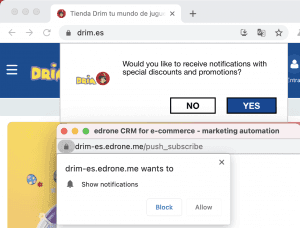
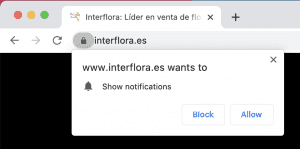
The easiest way to make sure this is not happening to you is to check you’re collecting subscribers via native opt-in. This is the browser prompt used to ask users to allow web push notifications. If your provider installed a custom opt-in prompt the chances of them registering subscribers under a subdomain of their ownership is higher. Take into consideration that native opt-ins have 3 times higher opt-in rates than custom ones. This is extremely important for the success of your web push notifications strategy.
2. Data Security and GDPR compliance
Even though web push notifications are GDPR compliant by nature, you still need to make sure that your service provider aligns with all regulations and keeps the data of your subscribers safe. This includes, not only abiying to the General Data Protection Regulation, but also storing the data in highly secure servers.
Check that your provider complies with GDPR even for subscribers who are outside the European Union and that you are the owner of all the data. This protects, not only your subscribers, but you as well ensuring that no one can share or sell your information to a third party that could even be your direct competitor.
3. Automated web push notifications by triggered-events
Automated web push notifications are the ones sent automatically. They’re triggered by a specific action from users on the site based on predefined events. You can create as many events as you wish but here are the most common and important ones that you should always include in your sequences:
- Category retargeting: a push notification sent to users that visit a Category Page but leave the website without taking any further action.
- Product retargeting: a push notification that’s sent to users that visit a Product Page and exit the web without continuing forward.
- Cart abandonment recovery: a web push notification sent to subscribers who add a product to their virtual shopping cart and abandon the site without completing a purchase.
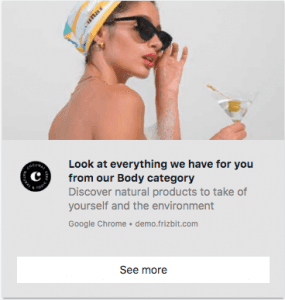
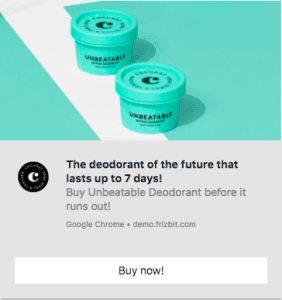
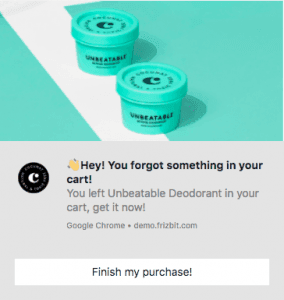
This is the basic sequence you should implement when using web push notifications. You can personalise it as much as you want depending on your type of business and industry and create additional ones that fit your specific marketing funnel and help users convert.
It’s important that you check what type of scenarios, triggered events and sequence automation personalisation each web push notification vendor provides before choosing one.
4. Hyper-personalisation
The next feature you want to keep an eye out for is the level of personalisation offered by the provider. Today’s users are looking for content and experience tailored to their wants and needs. Sending impersonal, pre-made messages just won’t cut it.
Hyper-personalisation is key when it comes to creating effective web push notification campaigns. Besides customising the messages with emojis and an appealing text make sure your provider offers the use of dynamic parameters.
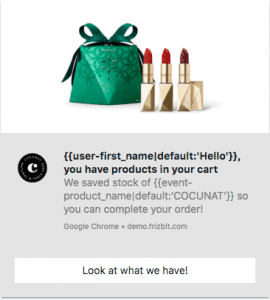
By using dynamic parameters your web push notifications can include very specific and relevant information such as product image, product name, user name, price and even brand. Dynamic parameters pull the information directly from the site and include it in the message of the notifications which, not only saves a lot of time and effort on campaign creation but also makes the notification hyper-personalised for the user.
5. Segmentation
Segmentation is essential to any marketing effort. The success of any campaign can rely on knowing who the target audience is and addressing the message properly to them. Is the same case when it comes to web push notifications.
Before deciding on a provider check what segmentation parameters they offer within the platform. The most basic ones should cover:
- Location
- Gender
- Language
- Browser
- Age
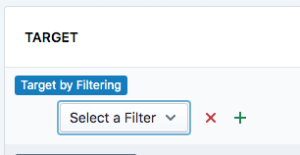
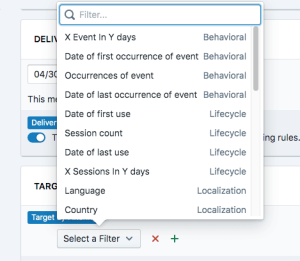
Of course, depending on the web push notification service there are many more possibilities. In addition to all the mentioned above, Frizbit allows to target users by behaviour, life cycle and user actions and the possibility to include them or exclude them of a specific campaign.
6. Scheduling
Scheduling is a basic feature any provider must offer. It allows you to design and create a web push notification campaign and choose a date and time to send it automatically for you at a later time.

By scheduling a campaign you make sure to always stay in touch with your subscribers even if you’re out of the office or maybe too busy to send it manually. A great strategy is to check the calendar, plan ahead and schedule your web push notifications campaigns with enough time. This will help you be super time efficient and to make sure you don’t miss communicating any important sales or events from your site.
That’s why it’s so important to make sure the provider you choose offers scheduling features within the platform.
7. A/B Testing
When it comes to any digital marketing effort it’s not easy to get right with the first attempt. Even though you might have a lot of insight about your target audience and have crafted and designed a web push notification campaign based on that information, it’s possible you don’t get the results you were expecting.

That’s why A/B testing is so important and you need to make sure your service provider includes this feature. By gathering information on the performance of previous campaigns, you can make small changes and try-out different versions of the same notifications to test which one does better and, little by little, improve your campaigns to make them the best they can be.
8. Customer support
Whether you’re familiar or not with web push notifications, is of utmost importance that your provider offers you impeccable customer support before and during your contract with them. During the decision making process you´re surely to have a lot of questions you need to clarify and this gives you the perfect opportunity to measure providers by requesting all types of information from them and evaluating their response.
The most common doubts that your provider should solve at first are:
- What’s the implementation and integration process like
- How do I install web push notifications?
- How long does it take to start sending web push notifications
- What’s the average opt-in rate for web push notifications
Asking these questions and listening to how the provider answers them will give you important information about the type of service they offer. The best advice we can offer is that you choose a provider that offers a trial period.
This way you can both test the performance of the platform, how it works, what kind of results you can expect long term and the type of support you get during said period: are they solving your issues properly?. Familiarizing with the tool and the provider is key to the success of your web push notifications campaigns.
Frizbit offers all new clients a trial period of one month with all features available for testing while providing customised support during the entire journey.
9. Pricing plans
There are as many pricing plan models available, as web push notifications providers. This is where you have to do your homework and research the option that really suits your business needs, size, industry and growth prevision.
Most providers offer subscriber-based pricing. This translates to you paying for the amount of opt-ins you get. These plans seem very appealing because they start with very low costs and seem very profitable. However, you have to think long term, taking into consideration that you cannot migrate all of your push notification subscribers.
In a subscriber-based pricing you could start paying 100€ for 5,000 subscribers, which seems nice. But as you continue to grow your database, each time you’ll pay more and more: if you reach 50,000 you’ll pay 250€, then 5,000€ for 150,000 and so on and on. The price is always going to scale through time becoming more and more expensive as you grow.
Other options offer to pay per click, or amount of notifications sent. But what makes the most sense is that you go for a provider that offers you peace of mind with a pricing plan based on your monthly web traffic with unlimited subscribers and unlimited notifications. This is the best way to have your costs fixed for the future, instead of always inflating prices.
When choosing a web push notifications service provider…
If you’re considering adding web push notifications as a new retargeting channel to engage with your customers, you’re already on the right path to improving user experience with amazing results. We hope this guide on how to choose the right web push notification service helps you make the right decision and select the provider that suits all of your needs.
If you are looking for the only provider which complies with all these above-mentioned criteria, contact Frizbit right away!
If you have any more doubts or just want to learn more about web push notifications, make sure you check out:
